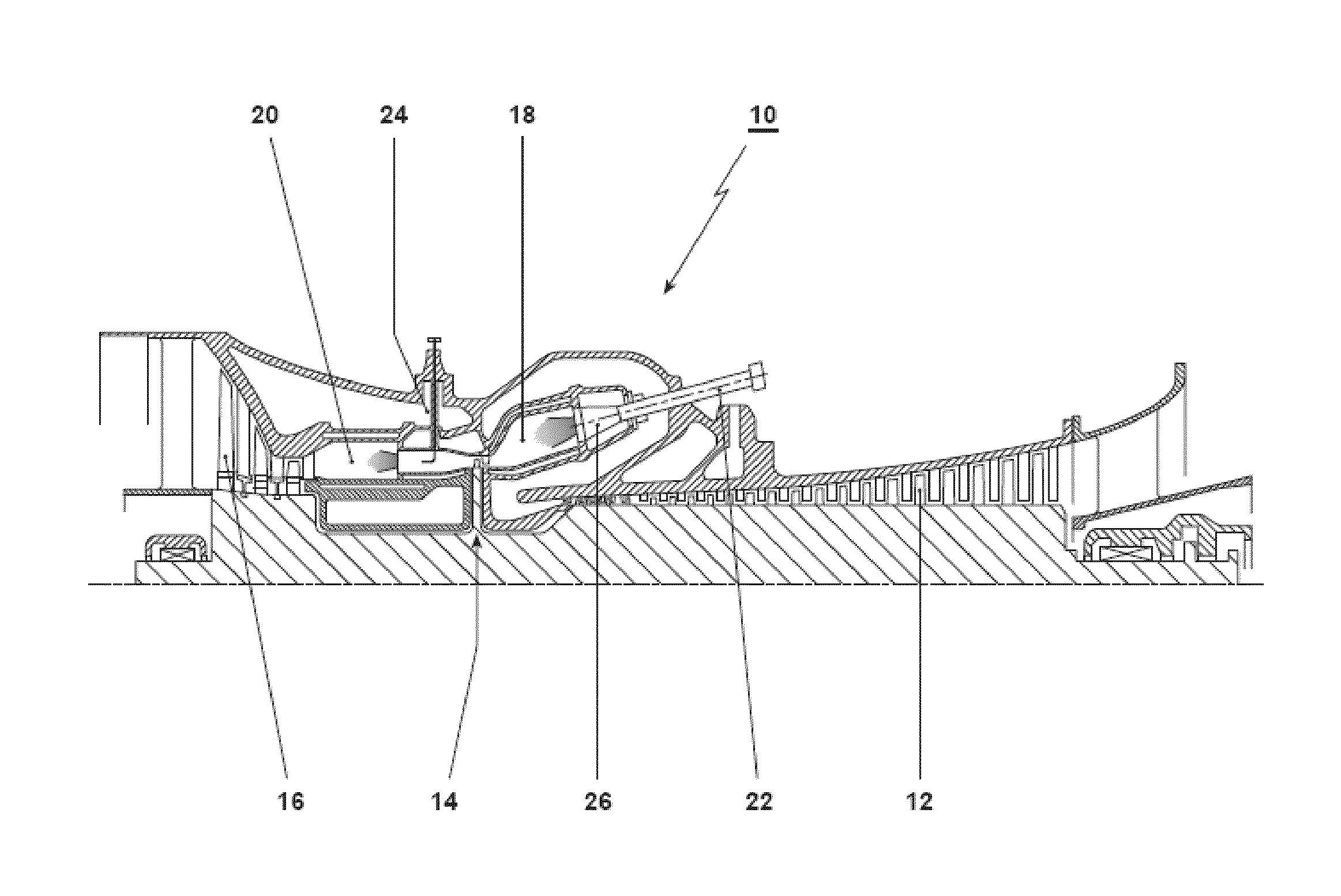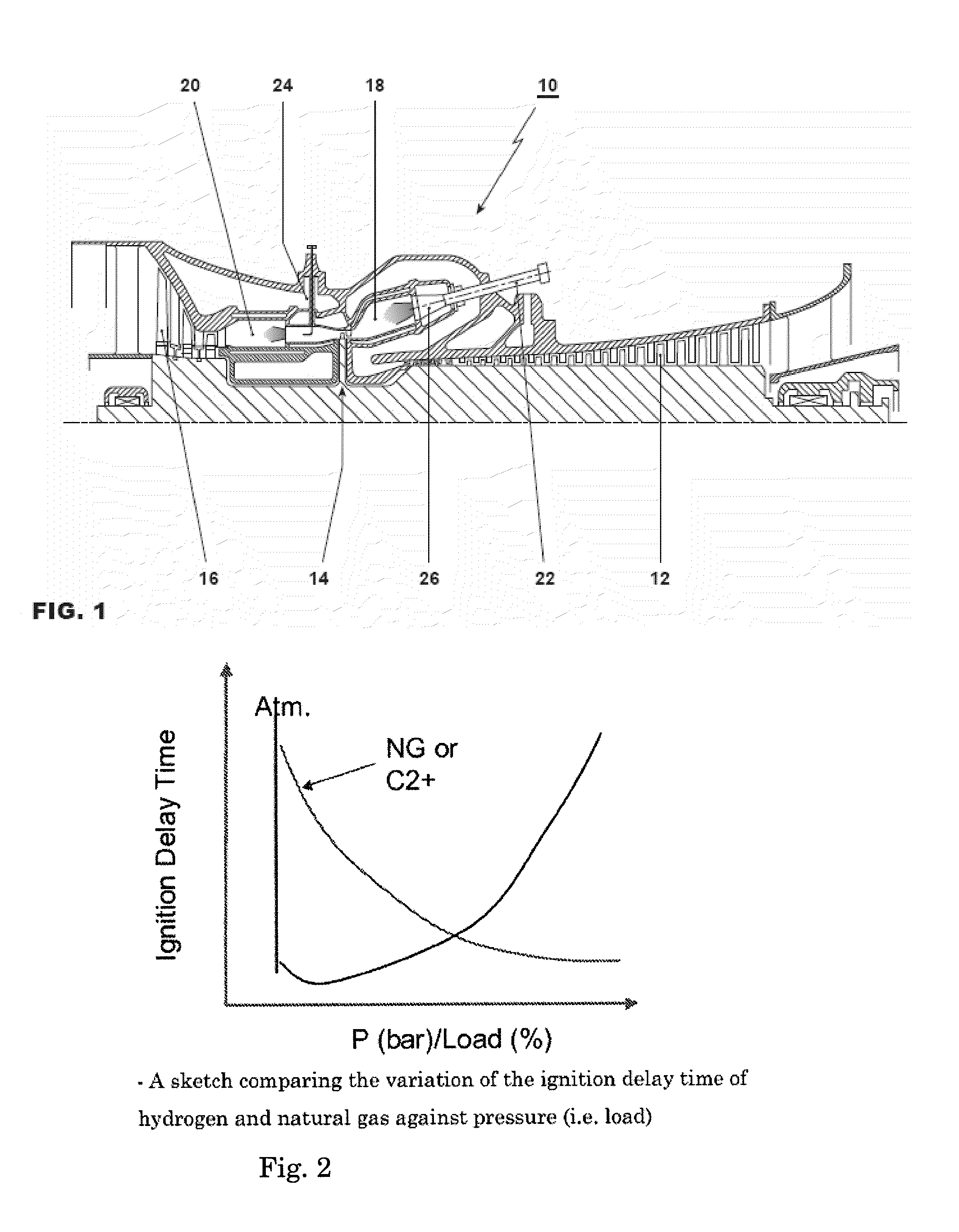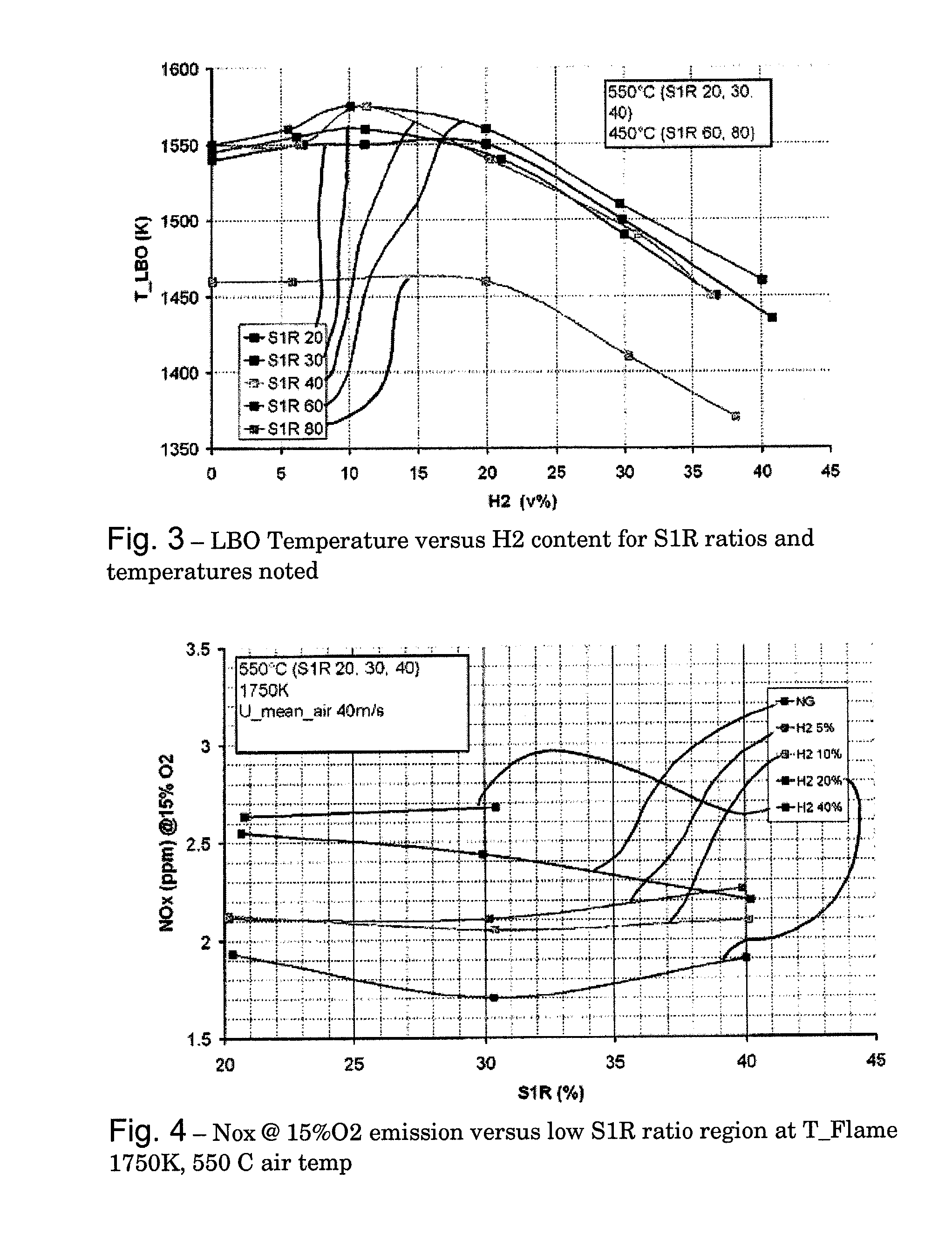Operating method for hydrogen/natural gas blends within a reheat gas turbine
a gas turbine and hydrogen/natural gas technology, applied in the direction of machines/engines, mechanical equipment, engine starters, etc., can solve the problems of reducing generating capacity, inability to increase production at peak load, and excess electricity, so as to improve lbo, reduce nox and co emissions, and increase stability. range
- Summary
- Abstract
- Description
- Claims
- Application Information
AI Technical Summary
Benefits of technology
Problems solved by technology
Method used
Image
Examples
Embodiment Construction
[0033]The disclosure deals with current and future capability to burn hydrogen enriched natural gas as a means of utilizing excess renewable generating capacity during off-peak periods. It relates to an operating method for the operation of an industrial gas turbine with a hydrogen enriched natural gas fuel and / or a diluted hydrogen fuel.
[0034]FIG. 1 shows a reheat gas turbine 10 with a compressor 12, high pressure and low pressure output turbine blade sections or stages 14, 16, and first and second annular combustors 18, 20. Fuel is injected into the combustors 18, 20 with fuel lances 22, 24, for the respective chambers 18, 20. The fuel is preferably a controlled mix of natural gas and hydrogen. As shown schematically in FIG. 11, the fuel is blended in fuel blending systems 30, 30′, preferably mixing chambers, associated with each turbine stage in which varying amounts of natural gas and hydrogen are mixed depending on operating conditions and / or the availability of hydrogen requir...
PUM
 Login to View More
Login to View More Abstract
Description
Claims
Application Information
 Login to View More
Login to View More - R&D
- Intellectual Property
- Life Sciences
- Materials
- Tech Scout
- Unparalleled Data Quality
- Higher Quality Content
- 60% Fewer Hallucinations
Browse by: Latest US Patents, China's latest patents, Technical Efficacy Thesaurus, Application Domain, Technology Topic, Popular Technical Reports.
© 2025 PatSnap. All rights reserved.Legal|Privacy policy|Modern Slavery Act Transparency Statement|Sitemap|About US| Contact US: help@patsnap.com



